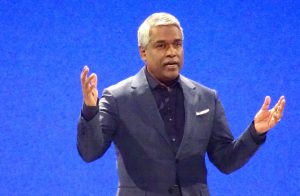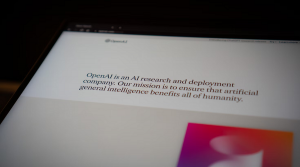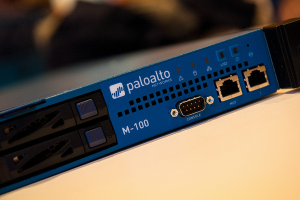Intel Eyes More Internet-Connected Devices
![]() Intel Corp., arguably the largest chipmaker in the world, is considering creating an increasing number of internet connected device ecosystems, such as home entertainment, for major growth opportunities.
Intel Corp., arguably the largest chipmaker in the world, is considering creating an increasing number of internet connected device ecosystems, such as home entertainment, for major growth opportunities.
The company’s chief financial officer, Stacy Smith, said as more devices become connected to the Internet, Intel plans to make a place in the field of home entertainment, storage, servers and beyond.
“It’s probably true in the digital TV space because if you think about it, the content that is going to be served to these devices is extraordinary,” he said. “It’s increasingly high-def digital content, so it’s got to be driving a pretty significant build out of the storage infrastructure and server infrastructure that supports all those devices.”
The interest of the company on connected devices such as digital signs, tablet devices and cars among the other areas are part of a strategy of expansion outside the personal computer market, the main source of income for Intel. The company is trying to encourage the use of Intel processors in a number these devices, including cars and cell phones.
Intel is already considering creating a pay TV service online that work on televisions, computers and mobile devices. Intel will sell a decoder connected to the Web that can receive streaming TV programming and video on demand.
With the growth of smart phones, Intel sees an integration of all mobile devices, computer and electronic equipment at the disposal of a user through the homogenization of their programs and content.
Intel is not alone
Intel is not alone in wanting to build out infrastructure capacity to improve the consumer electronics experience. Cisco recently unveiled mobile Internet networks – the Cisco ASR 5500 platform – that provides the flexibility and scalability that service providers need in order to meet the ever-evolving demands of their mobile customers. The new elastic packet core solution is designed to optimize the software, reduce cost, meet processing requirements and adapt to multiple conditions and network usage patterns.
Then there are mobile apps for cars. Ford this week introduced MyFord Mobile for iPhone, a mobile phone application that will control and help keep the car charged. The app lets you locate charging stations, access destination point, optimize routes, and schedule the load of the car.
General Motors, on the other hand, is creating a set of connected mobile apps under the Windows of Opportunity (WOO) Project to provide real time entertainment and educational value for rear seat passengers. The apps explore real time information, share and stream music, and respond to real-time car performance.
Apple’s highly acclaimed voice control system, Siri, will also soon make it appearance by early next year in a number of next generation cars including those of Audi, BMW, Chrysler, GM, Honda, Jaguar, Land Rover, Mercedes Benz and Toyota. Dubbed Eyes Free, the voice system will allow driver to play music, adjust the climate control settings, send a text message or make a call, and get map directions.
Kinect will recognize your mood
Currently, online advertising is customized to your search and browsing history, but now Microsoft is looking for an alternative way to sell products to users.
Microsoft wants to use the maximum potential of Kinect. Soon the terminal will expand to other areas outside the scope of games. Microsoft patented an application that would allow companies to display ads based on your emotions.
Kinect could even analyze emotions when you read emails, enter search terms or even in terms of user performance in online games.
The patent suggests the use of Kinect to analyze the face and body language of a user to determine their emotions, helping companies to deliver more appropriate ads. The patent indicates that companies could choose which emotions to fit in with their ads. For example, if you are sad you could be offered alternatives for fun, or if you’re happy companies could present a gadget that appeals to your positive outlook.
Microsoft also has big plans to use the connected motion sensor device in various other areas including in oil companies, in medicals, surgery, and in class rooms.
A message from John Furrier, co-founder of SiliconANGLE:
Your vote of support is important to us and it helps us keep the content FREE.
One click below supports our mission to provide free, deep, and relevant content.
Join our community on YouTube
Join the community that includes more than 15,000 #CubeAlumni experts, including Amazon.com CEO Andy Jassy, Dell Technologies founder and CEO Michael Dell, Intel CEO Pat Gelsinger, and many more luminaries and experts.
THANK YOU













